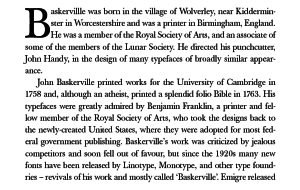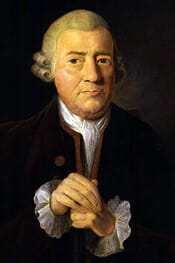Is there anything more mundane than a piece of paper? Really, paper is one of the more forgettable parts of daily life, and as book producers, paper is often an afterthought for self-publishers.
Part of the reason for this is that most self-publishers these days are using print on demand technology to produce their book. That’s a great idea because it pretty much eliminates the risk in paying for a few thousand books before you know if they will sell.
But one shortcoming of print on demand is the very limited range of papers available from most vendors. And by limited, I mean very limited. Like two: cream or white. That’s the only choice you get.
In the world of offset printing, there are many, many paper choices you can make for your book. You can choose from a huge variety of colors, textures, finishes, weights and physical makeup. You can get coated papers, uncoated papers, calendared papers, watercolor printing papers, and more. The choices are dizzying.
For experienced book producers, this limitation is one of the most restrictive parts of printing at on-demand suppliers. True, there are some with a larger range of choices, but they are nowhere near as wide as in offset printing.

Of course, offset printing is a technology that’s a hundred years older than the toner technology used in digital printing. As a mature technology, people have had lots of time to work out how to manufacture all these different papers in such a way as to make them usable for printing.
How Paper Can Make a Big Difference
Here’s an example from the history of printing that will show you what I mean when I say printing paper can make a huge difference.
In the 18th century, typefaces were undergoing a gradual transformation into more elegant, stylized forms than the oldstyle typefaces that had been modeled on the handwriting of humanistic scribes during the Italian renaissance.

Eventually the preference for the full curves and forgiving shapes of old style typefaces turned to a desire for more refined and elegant designs. There was only one problem.
Oldstyle typefaces have little variation in their strokes so that, although they have both thin and thick strokes, they do not vary all that much.
Printers of the time wanted typefaces with more contrast in them, so that the thin strokes of the letters would be very thin, the thick parts thicker.
The problem came with the paper which, at that time, was principally made from linen and cotton scraps that were pulped and formed into sheets. This paper is very rough, so rough that the fine strokes of the new letterforms wouldn’t print properly.

One printer, John Baskerville of Birmingham, England, was determined to solve this problem. He had beautiful type designs but needed a smoother paper. In a technological stroke, he solved the problem.
He came on a method of smoothing the surface of his printing paper that was quite ingenious. He set up several metal rollers that had been made very smooth. Then he made the rollers turn at different speeds.
When a sheet of paper was passed through the rollers, the difference in speeds caused one roller to spin more than needed, polishing the sheet of paper in the process.
The paper produced this way came to be known as “calendared” paper. The surface was so smooth from the spinning, polished rollers that Baskerville was able to print his beautiful, elegant typefaces on it and the thin strokes held up with no problem.
His typefaces were greatly admired by Benjamin Franklin, a printer and fellow member of the Royal Society of Arts, who took the designs back to the newly-created United States, where they were adopted for most federal government publishing. Wikipedia
This innovation made Baskerville one of the most popular printers of his day. His fame is attested to by the many families of typefaces that survive that are named after him. Each contains this contrast between thick and thin strokes that make his type so refined. Baskerville also pioneered a completely new style of typography by adding wide margins and leading between each line.
All the samples of Baskerville type in this article are from the Berthold foundry versions of the typeface.

So the next time you’re trying to decide between cream and white, think of old John Baskerville and his spinning rollers, a high tech innovator of his day, and the role that paper has played in the history of the printing of books.


